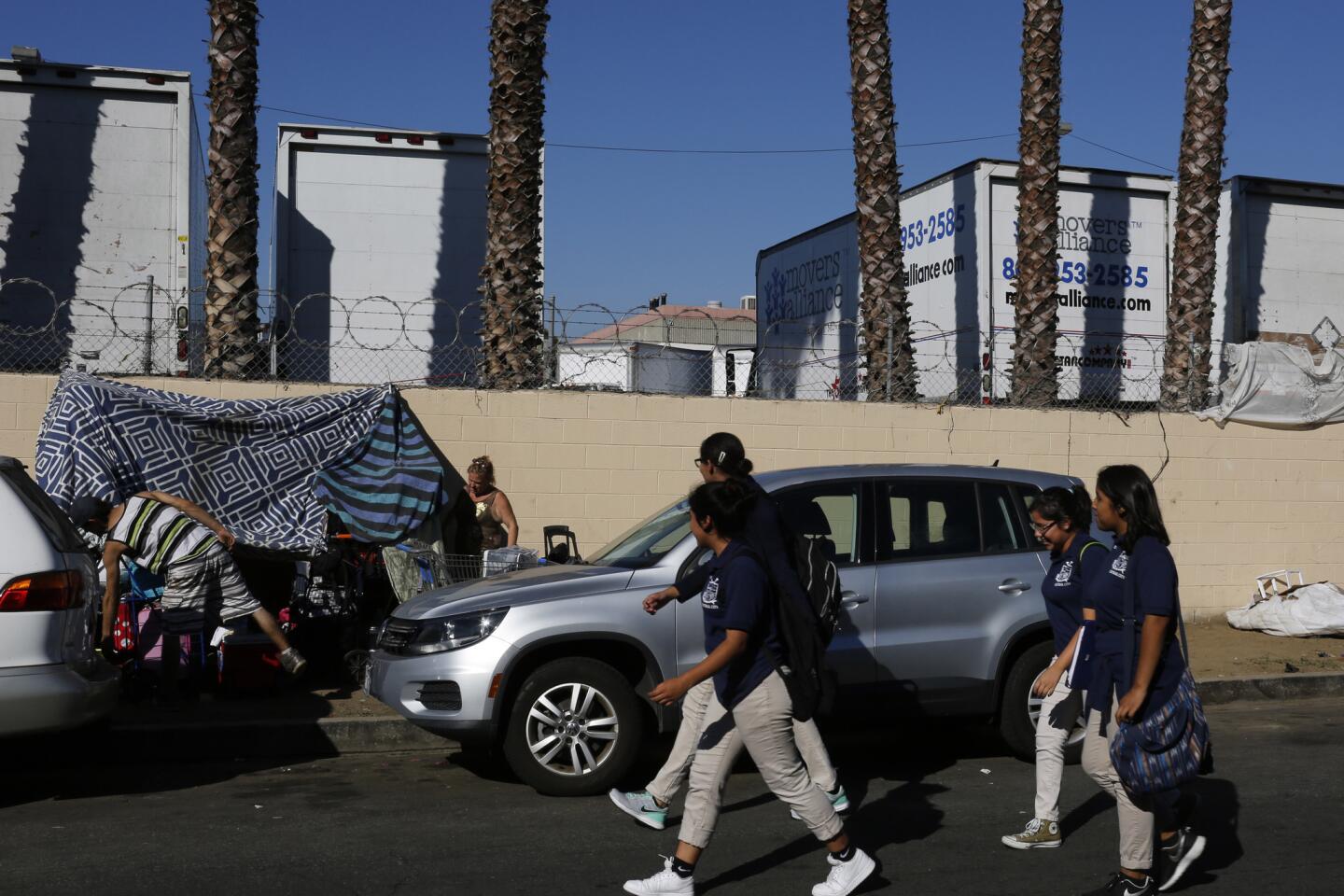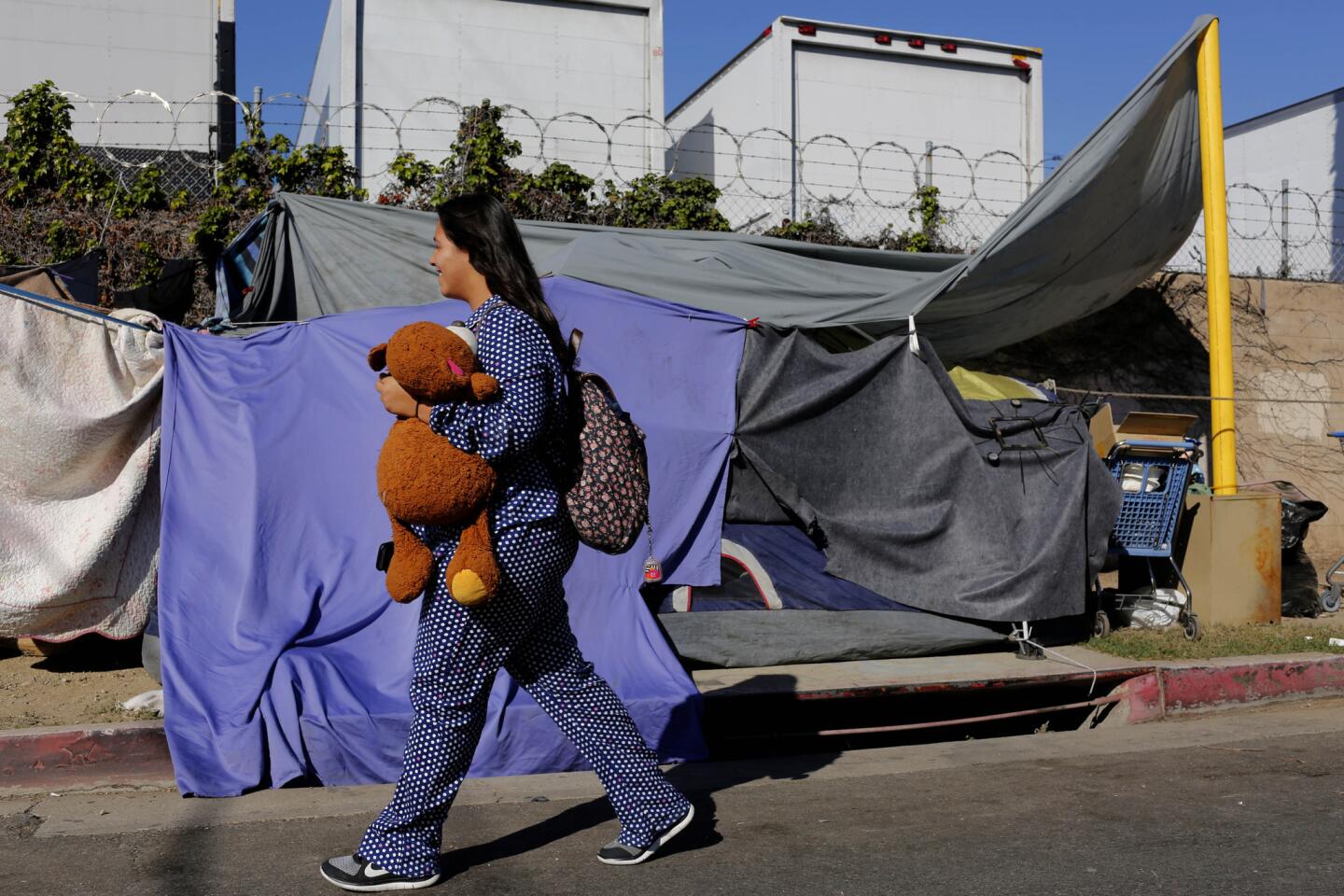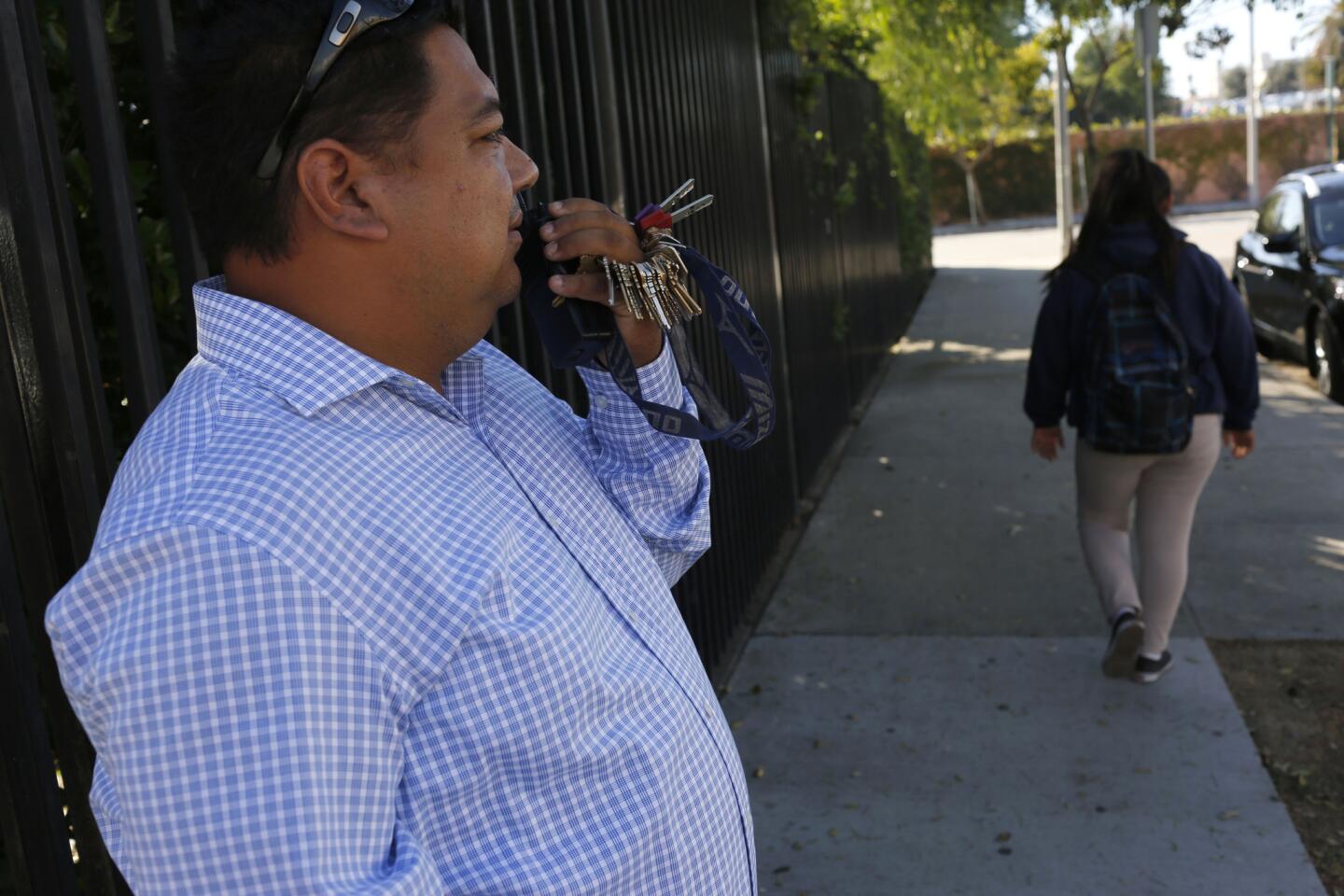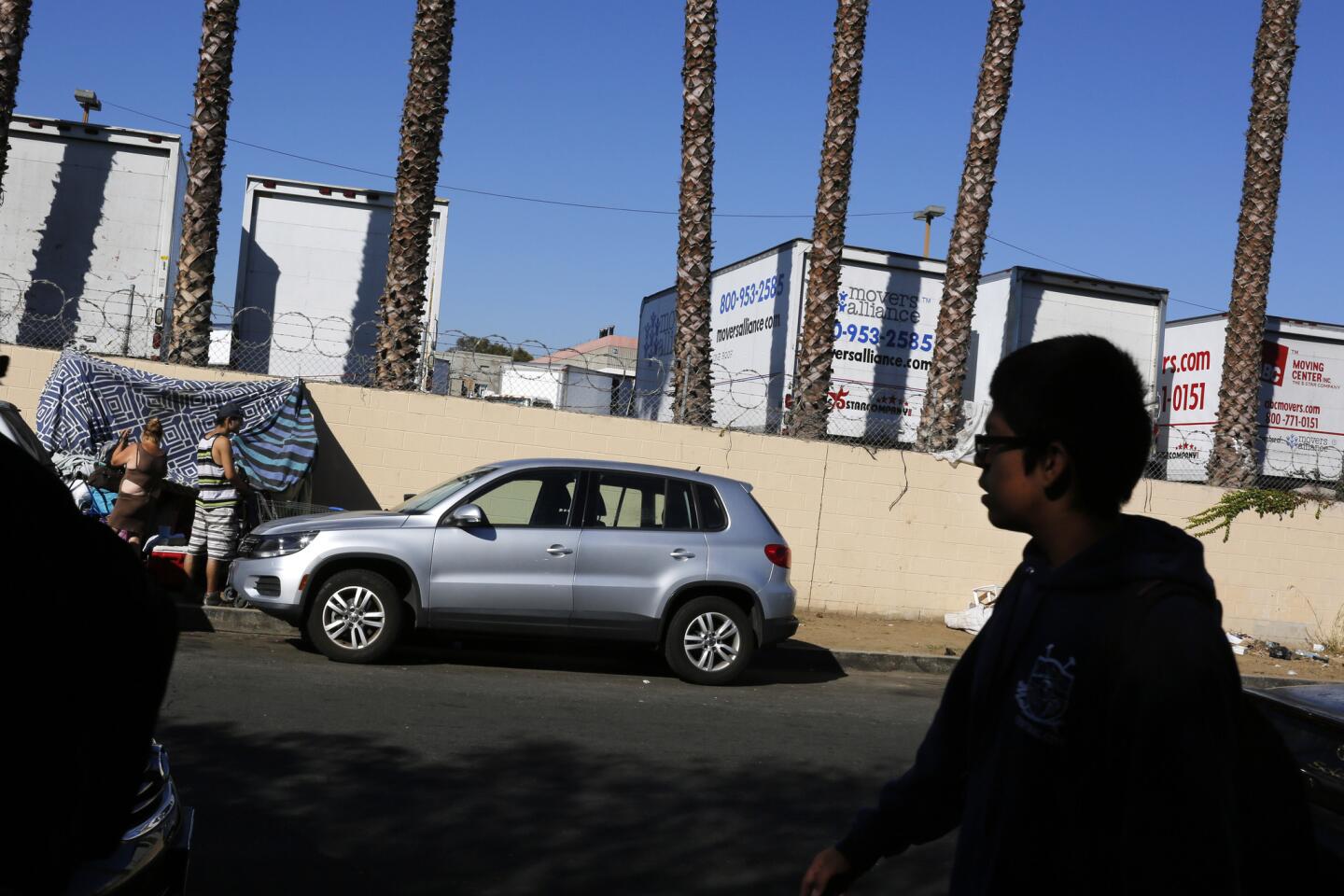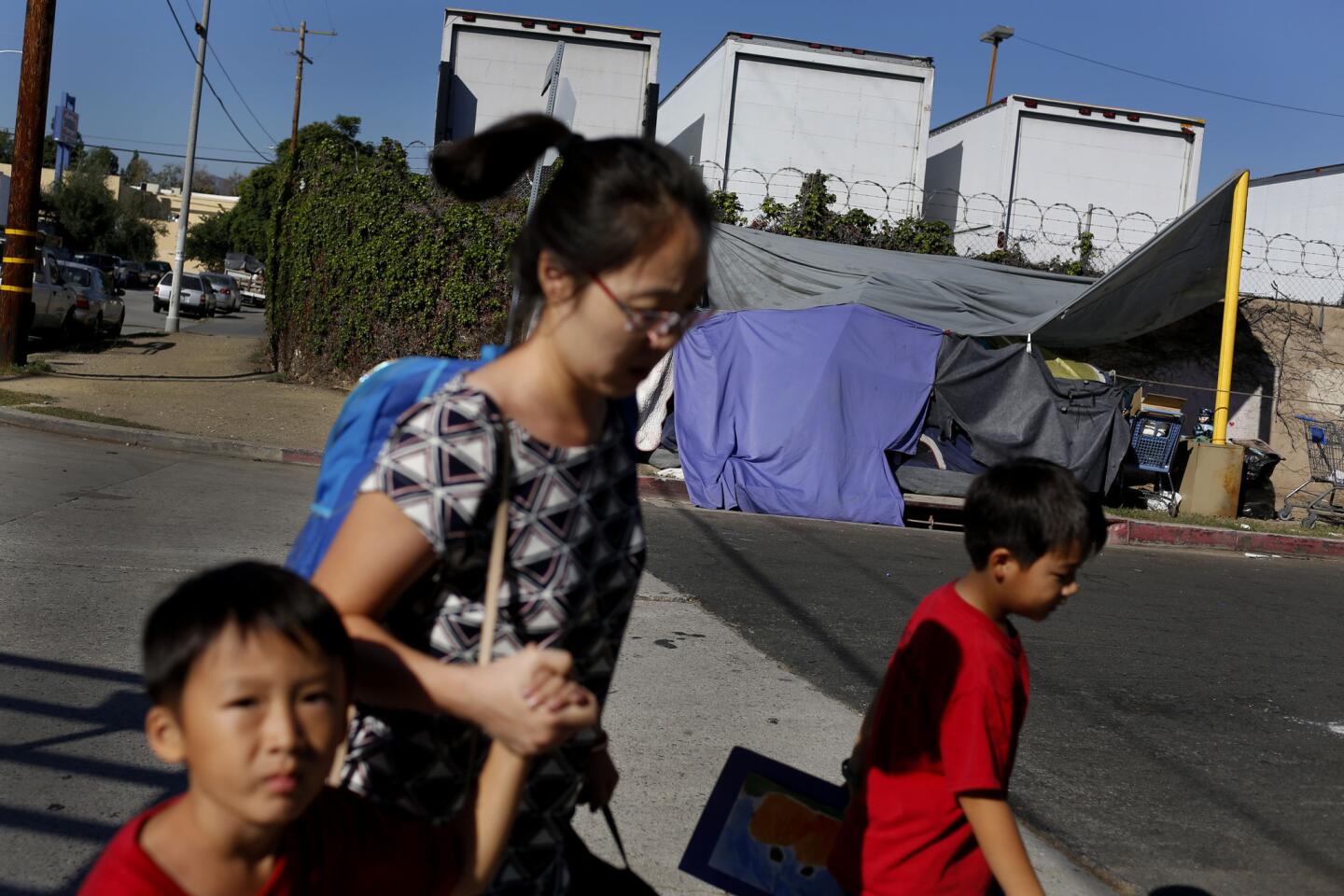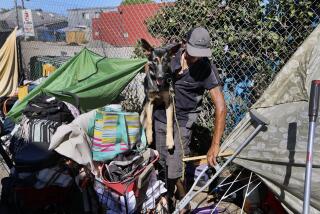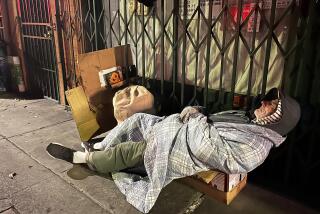Homeless near Koreatown high school push community into an uncomfortable clash of values
The encampment on Cosmopolitan Street, just across the street from Central City Value High School, wasn’t large.
There was a dome-style tent pitched on the dirt parkway. A few trash-strewn paces away stood a more permanent structure made of blue plastic tarps over a wood frame.
But the people living on the parkway had pushed the community of the Koreatown prep school into an uncomfortable clash of its own values.
Value No. 5 in the school’s mission, “Service to others and the community is a responsibility of an educated person,” was at odds with Value No. 4, “A safe, nurturing community is essential to academic excellence.”
“Ethically, it’s a very difficult situation,” said Joshua Julian, communications director for the four-campus Value charter organization. “Giving back is a way we structure our learning.”
To experience that, Value High students will work in pantries on Thanksgiving, serving homeless people.
But every day since school began this fall, they had faced an assault on their emotional well-being and their safety, school officials say.
Dean of Students Fernando Almanza said he has witnessed things that students should not see. He and security guard Mark Green stand guard at the beginning and end of each school day to keep the tent dwellers from interacting with students.
“They’ll start dropping F-bombs,” urinating and defecating in front of the students, Almanza said. “Every day me and Mr. Green stand there and have a staring contest.”
Almanza said he has removed hypodermic needles from under the trees on the school side of Cosmopolitan Street. He saw a woman using a blue tarp tent for prostitution. Another woman stood outside the gate waving a knife, then lay in the street, he said.
Almanza said he removes the feces left nightly under the trees beside the school.
“It’s not even part of my job,” he said.
What worries him most, Almanza said, is that the students are telling him they don’t mind. They’re getting used to it.
“No, you’re not supposed to get used to it,” he said.
Last week, the balance of values shifted; safety won out over charity.
About 100 parents and teachers filled the school’s community room Thursday night to tell their frustrations to a panel of city officials convened by Principal Jay Arroyo.
The response wasn’t what the audience wanted.
“You have to understand that being homeless is not a crime in and of itself,” said Steve Houchin, a neighborhood prosecutor in the Los Angeles city attorney’s office. “We can’t take action against someone just because they are a homeless person.”
“I understand everything you’re saying,” said teacher Nayeli Reyes. “However, our first and foremost concern is we’re a school. And these babies are my babies. When they’re defecating on our side of the street … we don’t have a gym so our students have to run around human feces on the concrete. That’s not OK.”
Reyes asked why the city couldn’t require homeless people to keep a certain distance from the school.
Houchin said no law prohibits homeless activity around sensitive sites such as schools.
He urged the parents to be the “eyes and ears” of law enforcement by reporting any illegal activity.
Just because you’re homeless, you don’t get to violate the law. It doesn’t make you immune to the laws that apply to you and me.
— Steve Houchin, a neighborhood prosecutor in the Los Angeles city attorney’s office
“Just because you’re homeless, you don’t get to violate the law,” he said. “It doesn’t make you immune to the laws that apply to you and me.”
But criminal activity is hard to document, and arresting people for misdemeanors isn’t a solution, he conceded. They cycle through jail and come back.
Juan Fregoso, a field deputy for Councilman Mitch O’Farrell, suggested that the school and city work together on a beautification project, planting the parkway with drought-resistant plants and painting a mural on the block wall behind the parkway.
The Times’ new education initiative to inform parents, educators and students across California >>
But he had only a vague recommendation for how the tents could be removed to make way for the planting.
“Sometimes if we increase the patrol, they get tired of it and move out,” he said. “As an immediate removal right now, there is nothing.”
The 470-student college-prep charter school is in its eighth year in the postage-stamp campus on Westmoreland Avenue, just south of Beverly Boulevard.
The former commercial building, refashioned with a post-modern interior, is squeezed between Virgil Middle School behind it, a moving company to its north and a residential building to its south.
It has a small parking lot and lunch pavilion in the back. The rest is classrooms. For physical education the students sometimes run laps around the block.
“That’s when you get in situations,” Almanza said.
Arroyo said he had heard there were homeless people on the street when the campus opened in 2007. But they were gone when he became principal in 2008. Until this fall, there had been none.
Now, they are always there, sometimes more, sometimes fewer.
On Monday, after last week’s meeting, a new tent had arrived. Two men and a woman who were organizing several carts of possessions under a lean-to wouldn’t give their names but didn’t hide their hostility toward Almanza, who had ejected them from the school side of the street.
“The cops say, ‘Keep it clean.’ Fine. But they give us trouble,” said the woman, sneering at Almanza, who was on a walkie-talkie, reporting their descriptions to the Los Angeles Police Department.
She said she and her friends would be gone in 10 days, when she received her Social Security check.
They weren’t really homeless, she said. They chose the spot at the school because they lived nearby. They had fallen only a week short of their rent.
“Because the city can’t help us, what are we going to do?”
As school let out, a stream of students filed down the middle of the street past the tents.
Almanza stared. There was no interaction.
“Schools should be sacred,” he said. “You shouldn’t have these encampments 50 yards from any school.”
He said he wished Mayor Eric Garcetti would come out and see for himself.
“I don’t care about your $100 million,” he said speaking of the emergency program Garcetti has said he is developing. “Get them out of here.”
Twitter: @LATdoug
ALSO
L.A. Unified again fires attorney who blamed student for having sex with teacher
Cal State panel proposes annual tuition hikes of about 2%
A decade of academic progress halts, NAEP standardized test scores show
More to Read
Sign up for Essential California
The most important California stories and recommendations in your inbox every morning.
You may occasionally receive promotional content from the Los Angeles Times.
